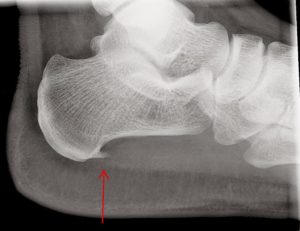I can never remember which grows up – a stalagmite or a stalactite. Not that I think of them that often nor am I sure I have ever seen one in person. I must have, right? I have seen lots of pictures but I don’t know how many caves I have explored.
In case you are not sure either, a stalagmite grows up from the floor of a cave. The word stalagmite comes from the Greek work “a drip”. It grows due to dripping water. The water evaporates and leaves calcium salts behind. As the water continues to drip the deposits continue to grow. Stalagmites generally have rounded or flat tips.
Then stalactites must grow from the ceiling. Stalactite comes from the Greek word “dripping”. They are also formed from a precipitation of minerals from dripping water. Stalactites are icicle shaped.
Interestingly, stalagmites and stalactites grow together over time to form one big column of calcium salts.
So then, what is an osteophyte? Osteophyte also comes from the Greek. Its basic translation is “a bone a plant” or “a growing bone”. An osteophyte is a bony growth formed on a normal bone.
Are you wondering why I have connected the three things? Well, they are all growths made from calcium. And that, ladies and gentlemen is today’s odd fact.
You may be familiar with the term “osteophyte” but under another name. Osteophytes are also called bone spurs. Bone spurs are bony growths that occur on the edges normal bones. They are often found where two bones come together or where tendons, ligaments, or muscles attach to a bone. Bone spurs are most often found in the cervical spine, the lumbar spine, shoulder, hip, knee, and heel. In your feet, they can also be found in the top of the foot, the arch of the foot or the toes.
Despite what they may look like and what the name “spur” might imply, they are not sharp. They are just extra bone and are usually smooth.
I have talked before about how fantastic our bodies are and the things your body will do to protect you. Bone spurs are one of those things. Your body will form a bone spur in response to pressure, rubbing, or stress that occurs over time. The creation of a bone spur is your body’s way to protect you.
In your feet, a bone spur can be formed on your heel if you continually wear shoes that do not fit correctly. This will sometimes be called a “pump bump”. A bone spur can also form on your heel in response to constant dancing, running, or being overweight. The pressure over time will cause the heel to try and protect itself. Also, a bone spur may form on your heel in response to plantar fasciitis.
Bone spurs in and of themselves are not generally the problem. They are found on x rays in conjunction with other issues. Since they are your body’s response to another issue, generally when you take care of the other issue, the bone spur will not be a problem. For example, when you treat your plantar fasciitis the bone spur will still exist but not be an issue any longer because you are not suffering from plantar fasciitis. It can happen that the bone spur is an issue and you can have surgery to remove the spur. While not generally the case, it is possible.
Your friendly local podiatrist will be your guide to any bone spurs you develop on the bones in your feet. The doctor will have the knowledge and expertise to help you. As I often tell you, if your feet start hurting, don’t wait to go to the doctor. In many cases, you will do more damage by waiting and it will take much longer to heal. (It can take time to heal your heel… I crack myself up.)



